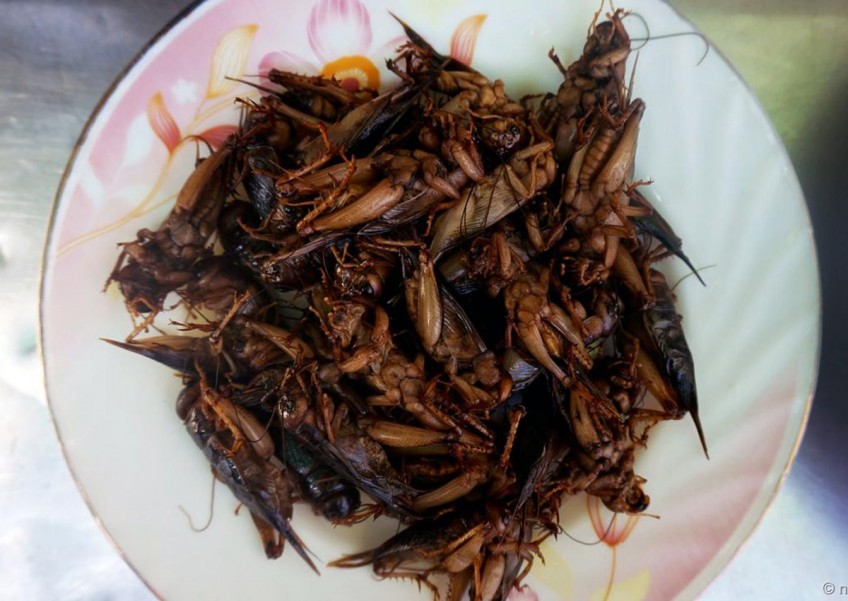Cambodia's creepy-crawly cuisine


Trade was brisk at Chbar Ampov Market in Phnom Penh, Cambodia's busy capital city. Beneath colourful layers of tarpaulin and scraps of corrugated iron, traders swatted flies while flinging dragon fruit, lychees and rambutans into dishes for weighing. The mostly female vendors wore patterned pyjamas and floppy hats - cheap clothes that offered protection from the blazing sun. Men lined the periphery on their motorbikes taxis, squatting over dismembered engine parts or stacking planks of wood. Smells of fresh meat, exhaust fumes and incense wafted through the air.
It was 9 am and my friend Jeremiah and I were at the market entrance, watching the activity. It was April - the hot season - when breakfast seemed seasoned with sweat. Since the heat puts most travellers off visiting Phnom Penh this time of year, we were the only ones waiting for Kimley, our Backstreet Academy tour guide. The company connects travellers with artisan activities throughout South East Asia, including a knife-making workshop in Siem Reap and fishing on the Mekong. Jeremiah and I were going to visit a family of insect traders, and learn how to cook the critters.
Eating insects in Southeast Asia, of course, is nothing new. But in a country where insects were sometimes referred to as "hunger food" during the famine created by the late 1970s Khmer Rouge regime - the bugs today are seen as a cheap and plentiful source of protein, amino acids and micronutrients, especially for the for the 79 per cent of Cambodian children that suffer some form of malnourishment. In fact, the United Nations' Food and Agriculture Organization now uses the pleasingly alliterative epithet, "six-legged livestock".
Kimley arrived on a small, sleek moped. He was earnest young man with glasses; slim as his ride.
Read the full article here.